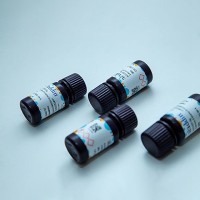Quantification of NPY mRNA by Ribonuclease Protection Assay
互联网
766
The ribonuclease protection assay (RPA) is one of the widely used techniques for detection and quantification of mRNA. This
assay offers at least 5–10 times the sensitivity of Northern blots and also enables the investigator to use multiple probes
in a single assay. Ribonuclease protection involves the hybridization in a solution of radiolabeled antisense RNA probe to
an RNA sample. The antisense RNA will only hybridize to the mRNA of interest, and the unhybridized single-stranded RNA is
removed by RNase digestion. The protected duplex radiolabeled hybrid fragments are recovered by ethanol precipitation. The
protected fragments are subsequently separated on a denaturing urea-polyacrylamide gel and analyzed by autoradiography. Multiple
probes can be used to detect levels of multiple target mRNAs. To normalize the variation between sample loading and losses
during various steps, a probe for house-keeping gene, e.g., cyclophilin, glyceraldehyde-3-phosphate dehydrogenase, β-actin,
or ribosomal RNA is used. Depending on the experimental condition one has to choose an appropriate housekeeping gene whose
mRNA levels are not altered by the experimental manipulation. In this chapter I present the RPA technique for quantification
of prepro-neuropeptide Y (NPY) mRNA levels in the hypothalamic tissue. This technique has been adapted in our laboratory from
methods described elsewhere (1
,2
). The procedure can be broken down into five parts: (1) total RNA extraction from the hypothalamic tissue; (2) synthesis
of sense RNA and radiolabeled antisense RNA probe; (3) solution hybridization and RNase digestion; (4) separation of protected
fragment by gel electrophoresis; and (5) analysis of protected bands by autoradiography or phosphor imaging.








